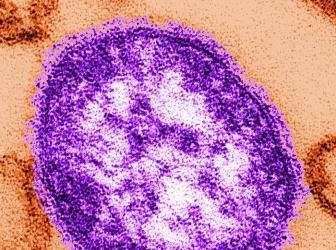FROM GASTROENTEROLOGY
Identifying subtypes and tumor mutations in patients with colorectal and stage III colon cancer can significantly improve survival rates, according to two new studies published in the January issue of Gastroenterology ( doi:10.1053/j.gastro.2014.09.038 and doi:10.1053/j.gastro.2014.09.041 ).
In the first study, researchers found that etiologically defined subtypes of colorectal cancer are characterized by marked differences in survival rates and confirmed the clinical importance of studying the molecular heterogeneity of the disease.
“Increasing evidence indicates that colorectal cancer (CRC) is a biologically heterogeneous disease that can develop via a number of distinct pathways involving different combinations of genetic and epigenetic changes,” wrote Amanda Phipps, Ph.D, of the University of Washington in Seattle, and her coinvestigators, adding that “the biologic distinctions between CRC subtypes resulting from different etiologic pathways may plausibly translate to differences in survival.”
Between 1998 and 2007, 2,706 participants were enrolled for this study through the population-based Seattle Colon Cancer Family Registry and followed for survival through 2012. Of those, 2,050 had tumor samples collected from them, each of which was classified into one of five subtypes based on tumor markers: type 1 (microsatellite instability [MSI] high, CpG island methylator phenotype [CIMP] positive, positive for BRAF mutation, negative for KRAS mutation); type 2 (microsatellite stable [MSS] or MSI-low, CIMPpositive, positive for BRAF mutation, negative for KRAS mutation); type 3 (MSS or MSI-low, non-CIMP, negative for BRAF mutation, positive for KRAS mutation); type 4 (MSS or MSI-low, non-CIMP, negative for mutations in BRAF and KRAS); and type 5 (MSI-high, non-CIMP, negative for mutations in BRAF and KRAS).
To analyze data, Cox regression models were used to estimate hazard ratios, 95% confidence intervals, and associations for each subtype with specific diseases and overall mortality, all of which were adjusted for age, sex, body mass, diagnosis year, and smoking history.
Results indicated that type 4 tumors were the most predominant, but subjects with type 2 tumors had the highest disease-specific mortality (hazard ratio = 2.20) and subjects with type 3 tumors also had unusually high disease-specific mortality (HR = 1.32). Type 5 tumors were associated with the lowest disease-specific mortality (HR = 0.30). Associations with overall mortality were similar to those with disease-specific mortality.
“These findings contribute to a small but growing literature supporting the significance of CRC-subtype classifications defined by combinations of these tumor markers,” the authors noted.
The second study’s results indicate that patients suffering from stage III colon cancer who have MMR-proficient tumors and mutations in BRAF (V600E) or KRAS had shorter survival times than patients whose tumors lacked these specific mutations.
“Defining [CRC] tumor subtypes based upon pathway-driven alterations has the potential to improve prognostication and guide targeted therapy,” wrote Dr. Frank Sinicrope of the Mayo Clinic in Rochester, Minn., and his associates.
Investigators collected 2,720 tumor samples from stage III cancer patients and detected mutations in BRAF (V600E) and KRAS using a polymerase chain reaction–based assay, and tumors deficient or proficient in DNA mismatch repair (MMR) via detection of MLH1, MSH2, and MSH6 proteins and methylation of the MLH1 promoter. Investigators used a separate sample of tumors, taken from 783 stage III cancer patients, to validate their findings, and employed the Cox proportional hazards model to evaluate associations between tumors and 5-year disease-free survival rates.
Tumors were divided into five subtypes, three of which were MMR proficient – those with BRAFV600E (6.9% of samples), mutations in KRAS (35%), or tumors lacking either BRAFV600E or mutations in KRAS (49%) – and two of which were MMR deficient: the sporadic type (6.8%) with BRAFV600E or hypermethylation of MLH1, and the familial type (2.6%), which lacked BRAFV600E or hypermethylation of MLH1.
The data accumulated by Dr. Sinicrope and his coinvestigators showed that more MMR-proficient tumors with BRAFV600E than MMR-proficient tumors without BRAFV600E or mutations in KRAS were proximal, high grade, N2, and prevalent in female subjects: 76% vs. 33%, 44% vs. 19%, 59% vs. 41%, and 59% vs. 42%, respectively (overall P < .0001).
Furthermore, a “significantly lower proportion” of patients having MMR-proficient tumors with BRAFV600E (HR 1.43; adjusted P = .0065) or mutant KRAS (HR 1.48; adjusted P < .0001) survived disease free for 5 years, compared with those whose MMR-proficient tumors lacked mutations in either gene.
“We found that a biomarker-based classifier can identify prognostically distinct subtypes within stage III colon cancer patients that was externally validated,” the authors wrote, adding that “taken together, our biomarker classifier provides important prognostic information in stage III colon cancers with implications for patient management.”
The investigators for both studies reported no relevant financial disclosures.




